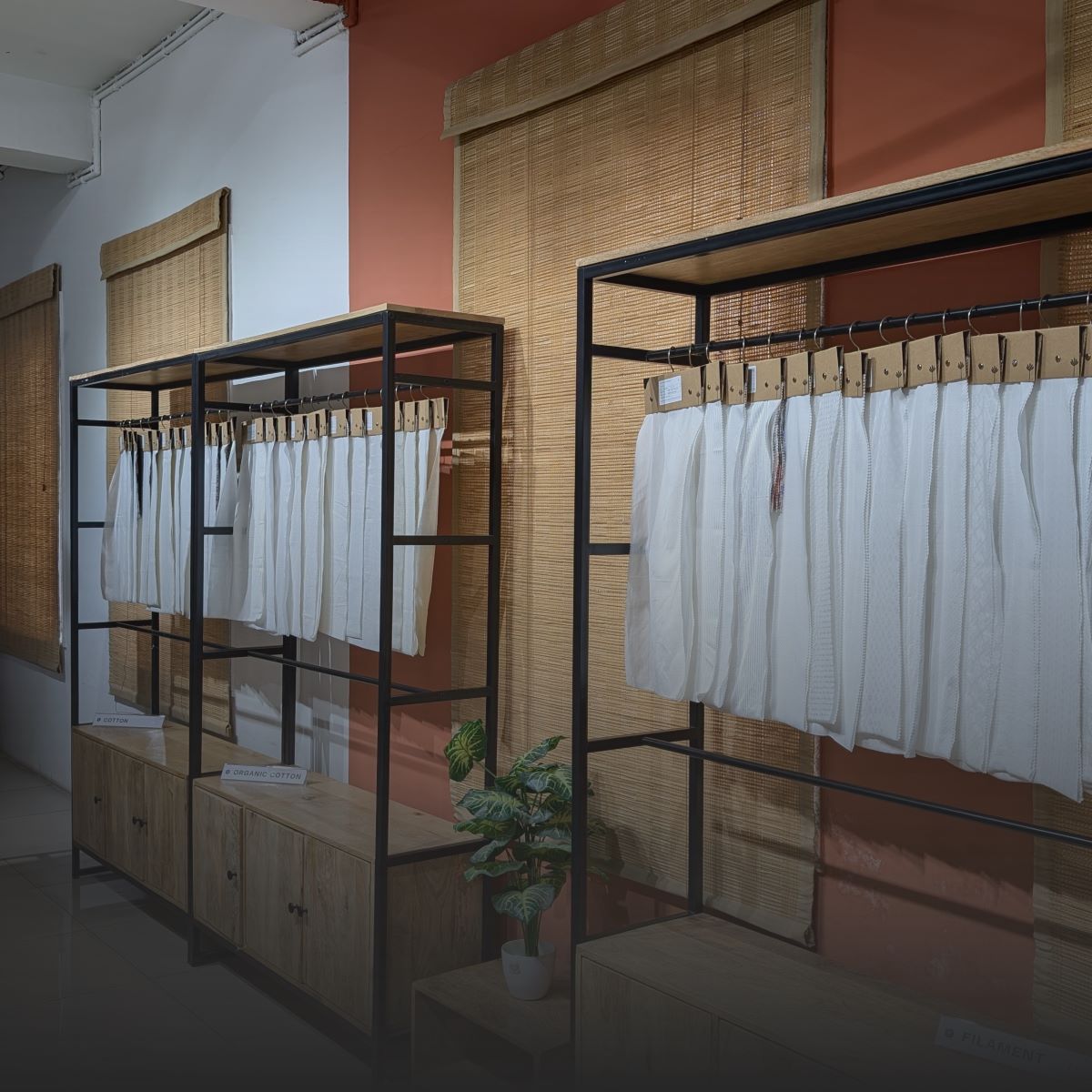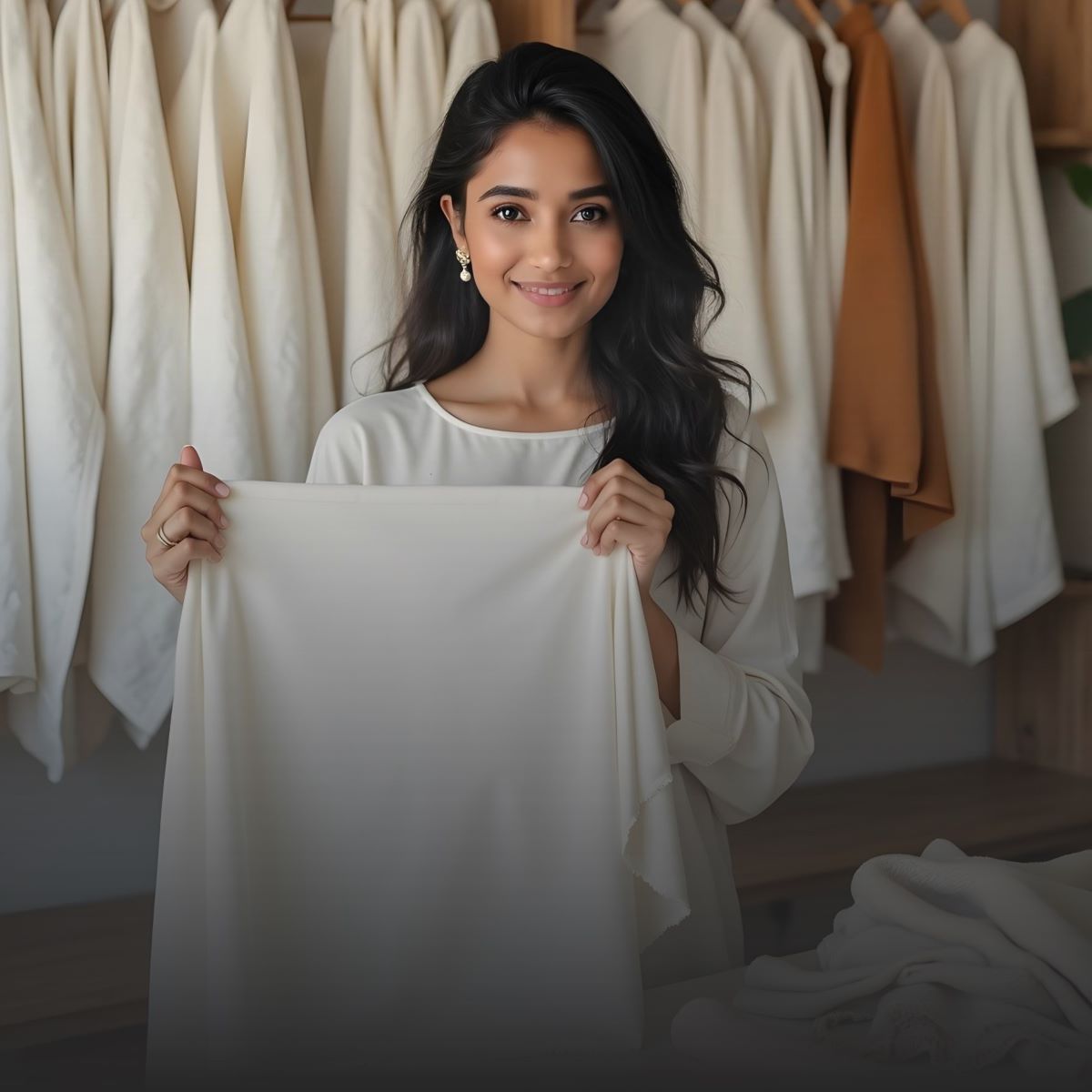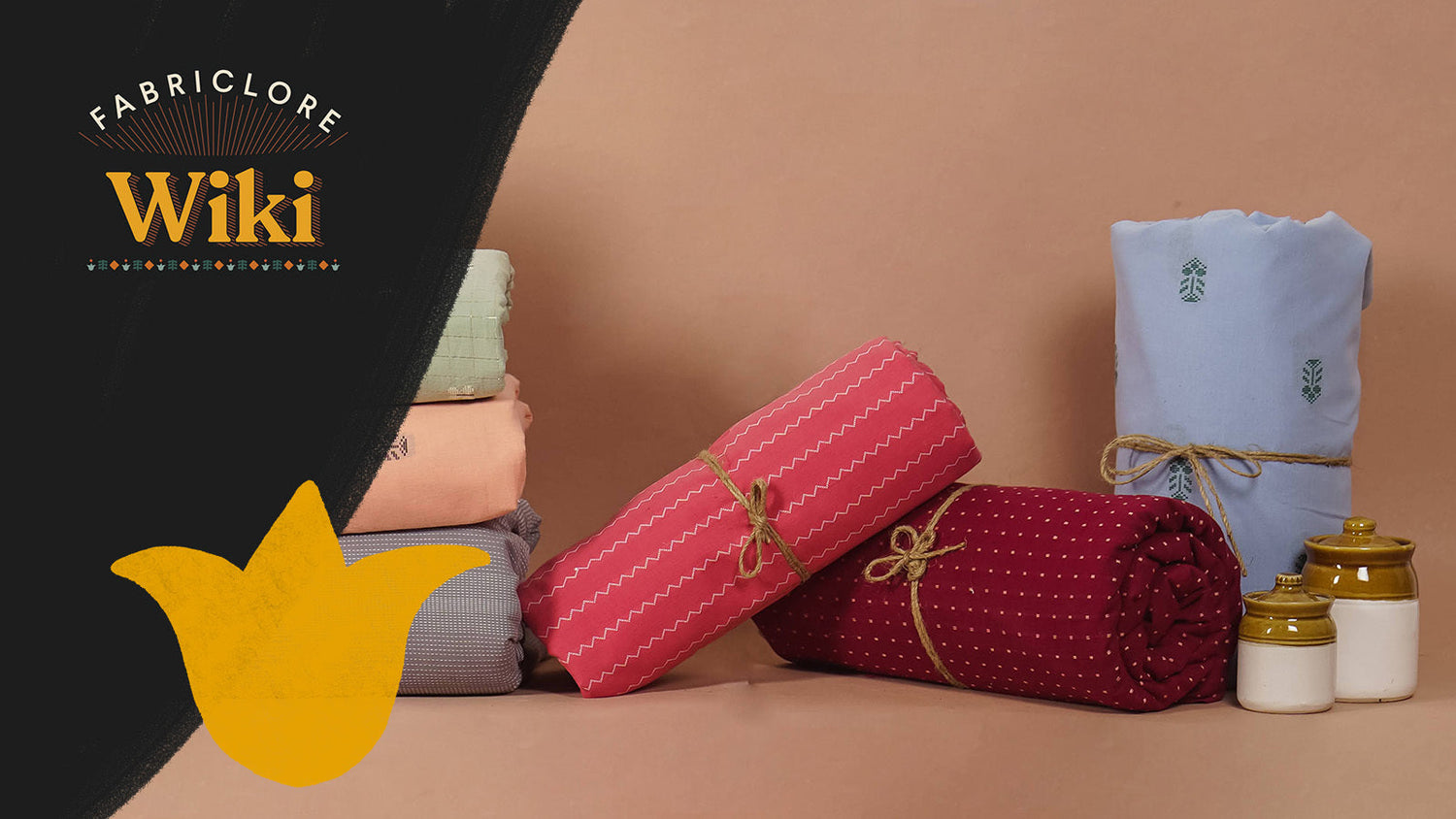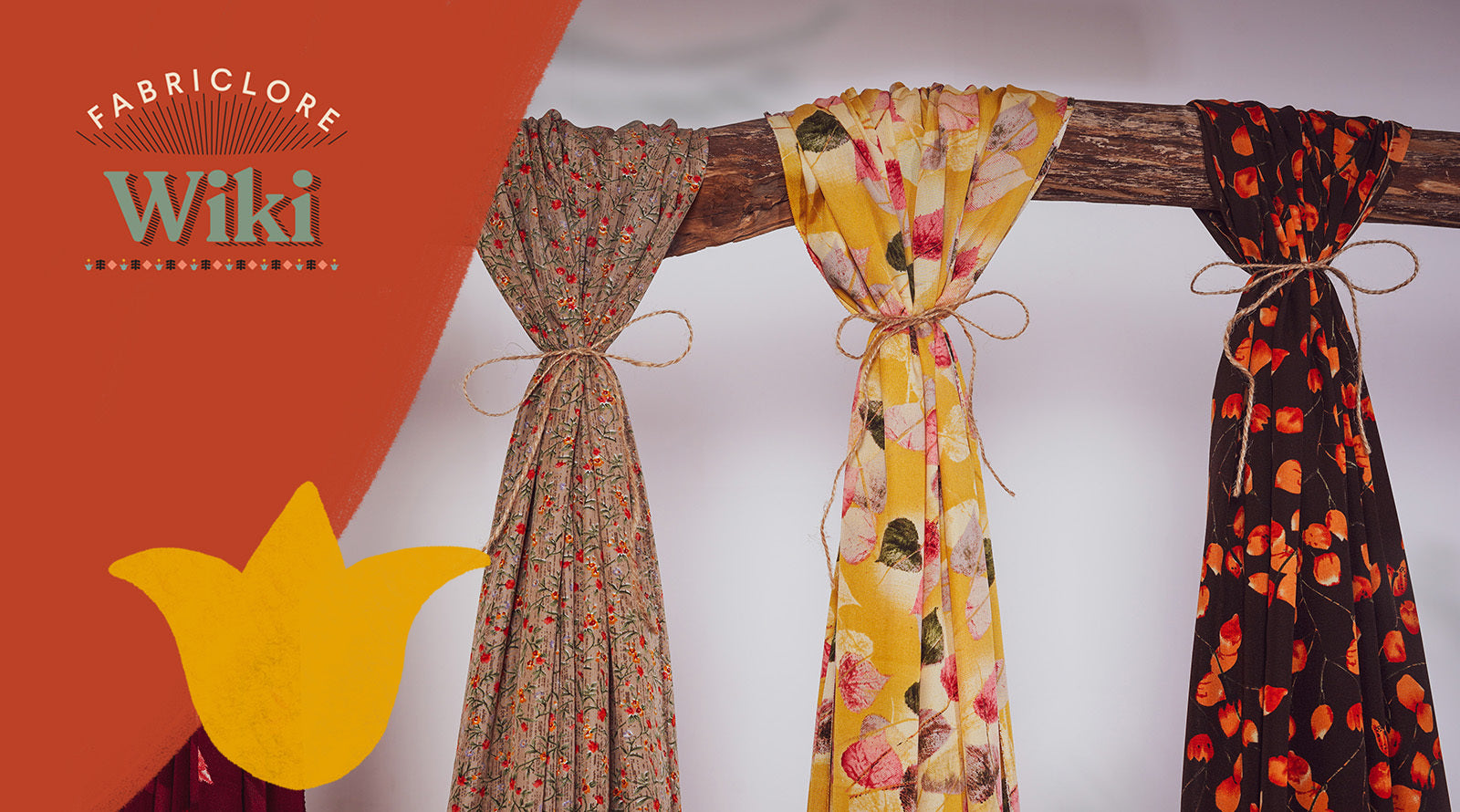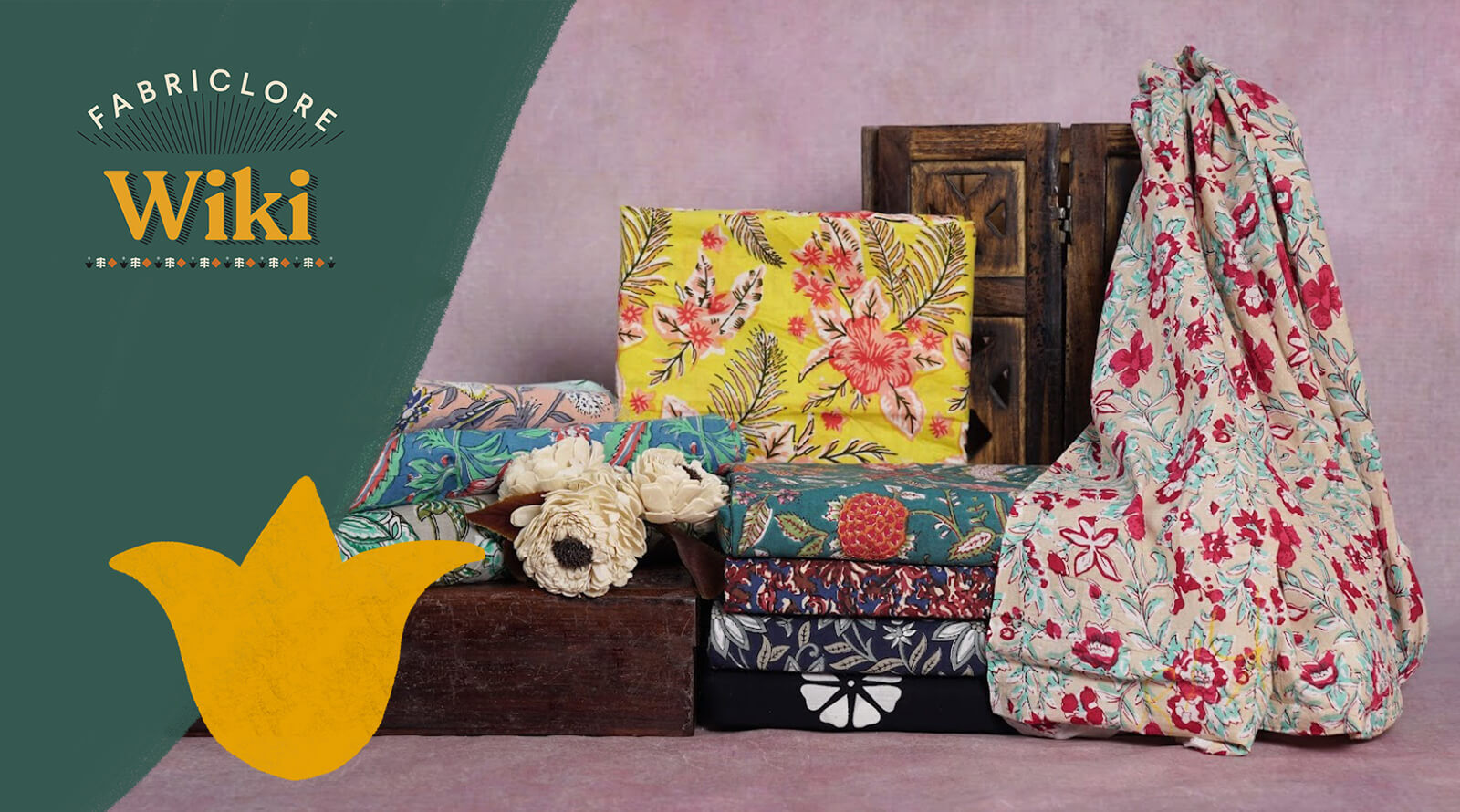Overview of Jacquard Fabric:
|
Property |
Description |
|
Fabric Type |
Woven fabric with intricate patterns made on a Jacquard loom. |
|
Origin |
Named after Joseph Marie Jacquard, who invented the loom in 1804. |
|
Composition |
|
|
Weaving Technique |
Patterns are woven into the fabric, creating raised, textured surfaces. |
|
Durability |
Very durable and wear-resistant. |
|
Texture |
Raised, textured patterns, often with a 3D effect. |
|
Breathability |
Varies: cotton is breathable; synthetics are less so. |
|
Applications |
Used in evening gowns, formal wear, jackets, upholstery, and bedding. |
|
Varieties |
Includes brocade, damask, and matelasse with unique textures. |
|
Price Range |
Can be expensive, especially with luxury fibers. |
|
Global Production |
Produced in China, India, Italy, and France. |
|
Care |
Dry clean or gentle handwash depending on the material. |
Introduction to Jacquard Fabric

- Jacquard fabric is a fancy and strong cloth with detailed patterns woven into it.
- It is made using a special machine called the Jacquard loom, which creates complex designs.
- This fabric is ideal for fancy clothes, furniture and home decor.
- Jacquard is available in materials like silk, cotton and wool.
- It remains a popular choice for both designers and buyers.
History of Jacquard Fabric
- Before the Jacquard loom, making detailed fabrics like brocade and damask was slow and expensive, making them affordable only for the wealthy.
- In 1804, Joseph Marie Jacquard invented a machine that used punched cards to speed up the process.
- This invention made it cheaper to produce detailed fabrics, making them available to a broader audience.
- Jacquard's invention also influenced the development of computers.
- His punched-card system inspired figures like Charles Babbage and was later used for the 1890 U.S. census.
- The Jacquard loom significantly impacted both the textile industry and technology.
What is Jacquard Fabric?
- Jacquard fabric is a special type of woven material known for its intricate, woven patterns rather than printed ones.
- Created on a Jacquard loom, this fabric allows detailed designs like florals, stripes or geometric shapes to be part of the fabric.
- Jacquard is often made from durable materials like wool and is heavier and more refined.
- It's popular for formal wear like evening dresses and suits and home decor items like upholstery and drapes.
- Its complex weaving process makes it less common in casual clothing but highly valued for its elegant, textured appearance.

Modern Innovations in Jacquard Fabric:
|
Innovation |
Description |
|
Digital Weaving |
The shift from mechanical to computerized looms for precision, customization and faster production. |
|
Automated Jacquard Looms |
Computer controlled looms improve efficiency, reduce human error and enable faster production. |
|
Improved Yarn Control |
Enhanced yarn management for consistent, detailed and durable designs. |
|
3D Weaving and Textured Designs |
Advances enable the creation of 3D textured patterns for added depth and tactile appeal. |
|
Customization and Personalization |
Digital weaving allows for on demand custom designs, speeding up turnaround times. |
|
Efficiency and Speed |
Automated looms enable high volume, fast production without sacrificing fabric quality. |
|
Sustainability |
Precision in production reduces waste and energy use, contributing to a more eco friendly process. |
|
Integration with Other Technologies |
Integration with AI and machine learning optimizes design, detects flaws and streamlines production. |
What Makes Jacquard Fabric Special?
- Jacquard fabric is special because it has detailed patterns and a smooth texture.
- The designs are woven into the fabric, making it both beautiful and functional for items like furniture, fancy clothes and luxury goods.
- It is strong, so the patterns stay bright over time.
- The jacquard fabric looks elegant, which is why it’s used in expensive clothes and stylish home decor.
How to Judge the Authenticity of Jacquard Fabric
- To check if Jacquard fabric is real, look at the pattern on both sides.
- Real Jacquard has the design on the back, while printed patterns only show on the front.
- Feel the fabric; genuine Jacquard feels textured because the design is woven in, while printed fabrics are smooth.

Types of Jacquard Fabric:
|
Type |
Description |
|
Jacquard Silk |
Luxurious and elegant, used for high end fashion, evening wear, and wedding dresses. |
|
Jacquard Satin |
Smooth, glossy finish with a rich look, perfect for evening gowns and formal wear. |
|
Jacquard Cotton |
Breathable and soft, ideal for casual garments and home décor. |
|
Jacquard Velvet |
Plush with rich texture, commonly used in upholstery and luxurious garments. |
|
Damask |
Subtle, monochromatic patterns, often with floral or geometric designs. |
|
Brocade |
Features bold, raised patterns, often with metallic threads, offering a rich, opulent appearance. |
Advantages of Jacquard Fabric
- Jacquard fabric is known for its beautiful designs and strength.
- The patterns are woven into the fabric, making them last longer and not fade.
- This makes Jacquard perfect for clothes and home items.
- It can be used for formal wear, evening dresses, curtains and furniture, providing long lasting beauty and quality.
Disadvantages of Jacquard Fabric
- Jacquard fabric can be more expensive due to its special weaving process and high quality materials.
- It also requires careful cleaning, which can add to the cost.
- Some Jacquard fabrics are heavy and stiff, making them less suitable for all types of clothes.
- It's important to choose the right Jacquard for your design to avoid these issues.
Sustainability and Environmental Impact of Jacquard Fabric

- Sustainable Jacquard fabrics, made from natural fibers like cotton and silk, are becoming more popular due to their eco friendly production methods.
- Companies are using less water and fewer chemicals during production, employing techniques like water saving dyeing and biodegradable fibers.
How to Wash and Care for Jacquard Fabric
- The jacquard fabric needs gentle care to maintain its quality and patterns.
- It’s best to hand wash or dry clean Jacquard fabric.
- If using a washing machine, set it to a gentle cycle with cold water.
- Avoid wringing or twisting the fabric; instead, let it air dry or lay it flat.
- Proper care helps keep Jacquard fabric bright and long-lasting.
The Role of Jacquard Fabric in Fashion and Design
- Jacquard fabric is a luxury material used in fancy clothes, furniture and accessories.
- Its detailed patterns make it elegant and popular in both custom and ready made fashion.
- The Jacquard loom revolutionized fabric production and its influence is still seen today.
- Designers combine old methods with new styles to create unique, timeless pieces.
Manufacturing Process of Jacquard Fabric:
|
Step |
Description |
|
1. Preparation of Yarn |
-Selection of Material: Choose yarn made from natural fibers (silk, cotton, wool) or synthetic fibers. -Yarn Dyeing: Dye yarn according to the required colors for the design. |
|
2. Setting Up the Jacquard Loom |
-Jacquard Loom Mechanism: Uses punched cards or digital systems to control individual warp threads for intricate patterns. -Programming the Loom: Pre-program the loom with the design, varying from simple shapes to complex multi color patterns. |
|
3. Weaving the Fabric |
-Weft Insertion: Weft threads are inserted through the warp threads in the pattern created by the programmed loom. -Pattern Formation: The loom moves warp threads to create the intricate design as the weft is inserted, taking hours for complex designs. |
|
4. Finishing the Fabric |
-Removal from Loom: Fabric is removed from the loom for finishing steps like bleaching, washing or steaming. -Textural Enhancement: Fabric may be pressed or embossed to highlight the pattern. |
|
5. Quality Control and Inspection |
-Inspection for Defects: The fabric is inspected for color consistency, pattern integrity and strength. -Quality Testing: Tests for durability, color fastness and shrinkage ensure the fabric meets quality standards. |
|
6. Post-Production Treatments |
-Final Touches: Treatments like softening agents or protective finishes are added for texture and durability. -Cutting and Packaging: Fabric is cut into rolls or specific sizes, pressed and packaged for distribution. |
Jacquard vs. Other Fabrics:
|
Fabric |
Description |
Key Distinction |
|
Jacquard vs. Brocade |
Brocade is a heavy Jacquard fabric with intricate patterns, often including metallic threads for an ornate look. |
Brocade is a type of Jacquard, characterized by its heavy, ornamental texture and use of metallic threads, whereas Jacquard offers more fiber and pattern versatility. |
|
Jacquard vs. Damask |
Damask is a fabric known for reversible patterns, typically flat and subtle in texture. |
Damask has a more subtle, flat pattern and is typically made of silk or linen, while Jacquard offers greater design complexity, depth and varied textures. |
|
Jacquard vs. Plain Woven |
Plain woven fabrics are simple, smooth, and uniform with a basic over under weaving pattern. |
Plain woven fabrics lack inherent patterns or textures, while Jacquard features intricate, permanent woven designs, often with a raised texture. |
Conclusion

In conclusion, Jacquard fabric is a timeless, flexible material with beautiful designs, strength and luxury. Its detailed patterns make it last longer, so it's popular for fancy clothes and home items. New production methods make it quicker and more eco-friendly, but it still stays elegant and strong. Although it can be more expensive and needs special care, its unique features make it a special fabric that will continue to be loved by designers and customers for years.
FAQ’s
Is Jacquard better than cotton?
Jacquard and cotton are different fabrics. Cotton is soft, breathable and light, making it great for everyday wear. Jacquard is a woven fabric with patterns, often made from cotton, silk or wool. It is stronger and fancier, making it perfect for special occasions or home décor. Cotton is cheaper and more flexible, while Jacquard’s detailed design makes it more luxurious.
What does Jacquard fabric feel like?
The jacquard fabric feels unique because of its detailed patterns. It’s usually thicker and has a smooth, structured feel. The patterns are often raised, making the fabric feel rich. Depending on the material, Jacquard can feel soft or textured, but it always feels high quality.
Is Jacquard fabric good?
Yes, Jacquard is a good fabric. It’s strong, durable and has beautiful designs woven into it, so the patterns won’t fade. It’s great for fancy clothes and home decor, but it can be heavy and might need special care.
Is Jacquard washable?
The jacquard fabric needs careful washing. Some Jacquard fabrics made from cotton or synthetics can be machine washed on a gentle cycle, but fabrics like silk or wool should be dry cleaned to protect the patterns. Always check the care instructions for the fabric.
Is Jacquard fabric expensive?
Yes, Jacquard can be more expensive than regular fabrics. The process of making it requires skill and time, so it costs more. Fabrics made from silk or with metallic threads can be even pricier. However, Jacquard’s durability and beauty make it worth the price.
Where can I buy Jacquard fabric online?
You can buy Jacquard fabric online from many fabric stores. Websites like Fabriclore offer a variety of Jacquard fabrics in different materials, patterns and colors. Compare prices and options before buying.
We also happen to be a magnet for suggestions, and would love to catch yours….throw us yours on hello@fabriclore.com
